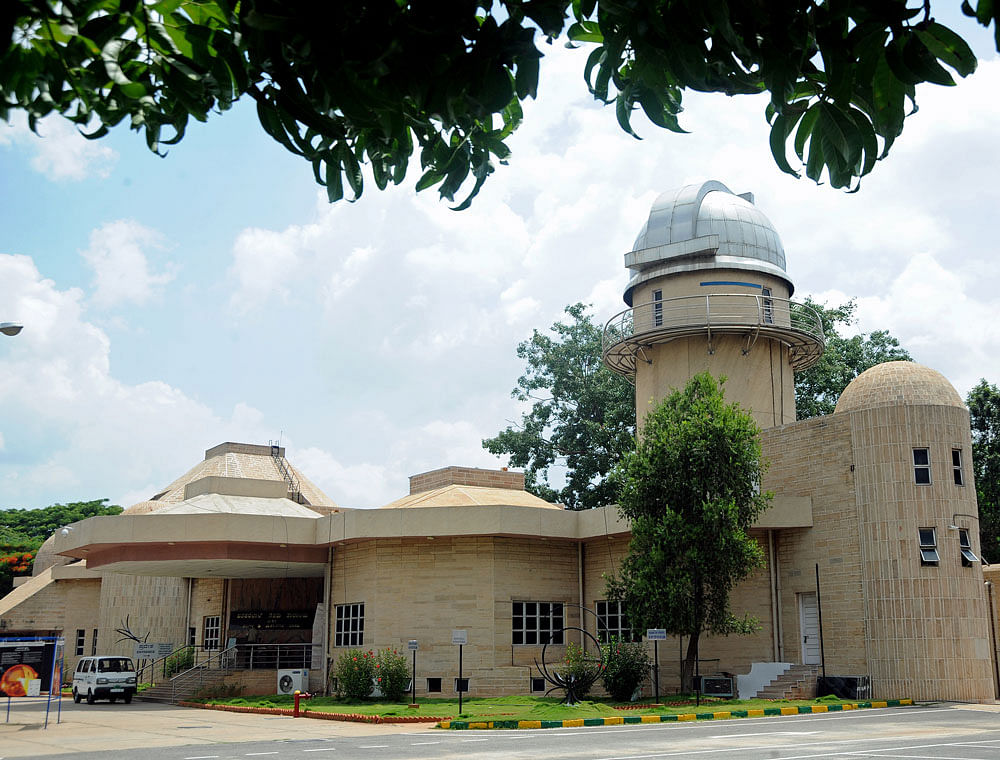
Krishna Tanmeerbavi, a sixteen-year-old aspiring astrophysicist, was one of the several excited students along with parents who had gathered at the Jawaharlal Nehru Planetarium in the city to witness the rare ‘Zero Shadow Moment’.
The zero shadow moment can be described as the time when there is no shadow as the sun is exactly at the zenith.
The zero shadow moment was demonstrated at 12.16 pm at the planetarium by Madan K, a student who recorded the phenomenon.
“I began documenting the decreasing shadow of the pole at 11.37 pm . At that time, the length of the pole’s shadow was 16.2 cm which reduced to 10.4 cm at 11.52 and at 12.04 it was recorded at 5.5 cm. It was at 12.16 that there was no shadow,” Madan said.
Explaining the occurrence, he said, “This phenomenon can be felt only in the regions that lie between the Tropic of Capricorn and the Tropic of Cancer. The shadow at noon can be zero on only two specific days in a year in these regions.”
“On June 22, the sun will be at the northernmost point which is called the Summer Solstice or Uttarayana. The sun, then retraces its path and starts moving towards south which is called the Winter Solstice or Dakshinayana (From Tropic of Cancer to Tropic of Capricorn).
Again on August 19, the sun will exactly be at its zenith and we will be able to witness the zero shadow moment,” Pramod Galgali, Joint Director of the Bangalore Association for Science Education, Nehru Planetarium, said.
“Bengaluru is at 12.9 degrees north latitude making us one of the cities that will witness the zero shadow moment in India along with cities like Chennai and Mangaluru. Cities like Delhi that fall above the Tropic of Cancer cannot witness this phenomenon,” Galgali said.